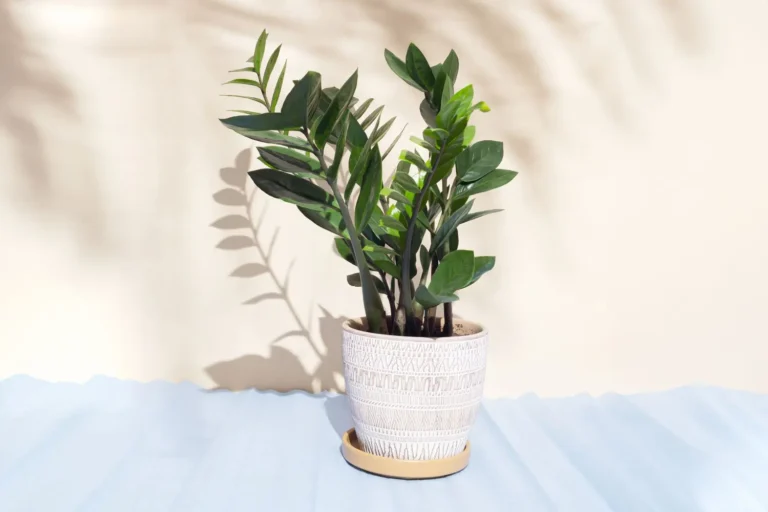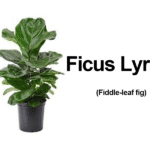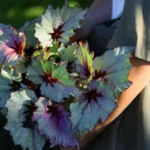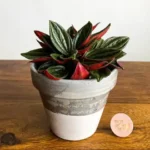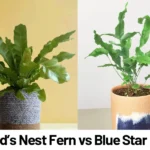ZZ Plant: The Low-Maintenance Legend of Indoor Gardening
If you’re new to houseplants or looking for a nearly indestructible companion for your indoor jungle, the ZZ Plant (Zamioculcas zamiifolia) might just be your perfect match. With its glossy leaves, fuss-free care requirements, and ability to thrive in low light, the ZZ Plant has earned its reputation as a top choice for both plant novices and seasoned enthusiasts.
In this guide from Leaf Plant Garden, we’ll explore what makes the ZZ Plant so special, how to care for it throughout the year, and tips for keeping it healthy and happy indoors.
Meet the ZZ Plant
Native to Eastern Africa, the ZZ Plant is a tough, rhizomatous perennial known for its waxy, dark green leaves that can brighten up even the dimmest corners of your home. While it may appear delicate with its polished leaflets, beneath the surface it’s storing energy in potato-like rhizomes that help it survive long periods of drought.
Some quick highlights:
- Botanical name: Zamioculcas zamiifolia
- Common names: ZZ Plant, Zanzibar Gem, Eternity Plant
- Light requirements: Low to bright indirect light
- Water needs: Low – drought-tolerant
- Growth habit: Upright, clumping form (up to 2-3 feet tall)
Why the ZZ Plant is Perfect for Beginners
Some indoor plants can be temperamental, but the ZZ Plant is widely celebrated for being low-maintenance and incredibly forgiving. Here’s why it’s adored by beginners and busy plant lovers alike:
- Tolerates low light: Ideal for offices, bathrooms, and rooms with minimal sunlight.
- Drought-resistant: Stores water in its rhizomes, so it doesn’t mind if you forget to water it now and then.
- Air-purifying: According to NASA’s Clean Air Study, it can help remove toxins like benzene and xylene from indoor air.
- Minimal pest issues: It’s rarely affected by common indoor plant pests.
How to Care for Your ZZ Plant
Though hardy, a little care goes a long way in keeping your ZZ Plant looking its best. Let’s dive into the key elements of ZZ Plant care:
Light Requirements
ZZ Plants are one of the few houseplants that do well in almost any light condition. However, they shine their brightest when provided with medium to bright indirect light.
- Low light: Suitable, but growth may be much slower.
- Bright indirect light: Optimal for healthy, lush foliage and regular new growth.
- Avoid direct sun: Direct rays can scorch the leaves, turning them yellow or brown.
Leaf Plant Garden Tip: Rotate your ZZ Plant every few weeks to promote even growth and prevent leaning toward the light.
Watering Your ZZ Plant
The biggest threat to ZZ Plants is overwatering. Their rhizomes act as natural reservoirs, so they won’t get thirsty quickly.
- Water once every 2–3 weeks: Or when the top 2–3 inches of soil feels dry.
- Less is more: Underwatering is better than overwatering for this plant.
- Well-draining soil: Use a cactus or succulent mix, or amend potting soil with perlite or sand.
Warning: Always empty the saucer after watering to avoid root rot—a common issue caused by water accumulating at the bottom.
Humidity and Temperature
ZZ Plants are not too picky about humidity and easily adapt to typical indoor levels. However, they prefer warm temperatures between 65°F and 80°F (18°C to 27°C).
- Keep out of cold drafts: Avoid placing it near air conditioners or cold windows in winter.
- Minimum temperature: Don’t expose to temps below 45°F (7°C).
Feeding and Fertilizing
While ZZ Plants aren’t heavy feeders, fertilizing during the growing season (spring and summer) can encourage new growth.
- Use a balanced houseplant fertilizer: Once a month, diluted to half strength.
- No need in winter: The plant rests and won’t require extra nutrition during the colder months.
Repotting and Growth
ZZ Plants grow slowly but steadily. They typically need repotting every 2–3 years, or when roots or rhizomes start crowding the pot.
- Best time to repot: Early spring, before the active growth season begins.
- Signs it’s time: Roots coming out of drainage holes, slowed growth, or water draining too quickly.
Tip: Choose a pot that’s only an inch or two wider than the current one and be sure it has drainage holes.
Common Issues and How to Fix Them
ZZ Plants are hardy, but not invincible. Keep an eye out for these common issues:
Yellowing Leaves
Cause: Often a sign of overwatering.
Solution: Let the soil dry out completely before watering again and ensure drainage is adequate.
Brown Tips
Cause: Low humidity or buildup of salts from tap water.
Solution: Use filtered or distilled water, and occasionally flush the soil with clean water to remove salts.
Drooping Stems
Cause: Overwatering or root rot.
Solution: Check roots for rot, remove affected parts, and repot in fresh, dry soil if necessary.
Pest Problems
Though rare, ZZ Plants can sometimes attract pests like spider mites or scale insects.
Prevention and Control:
- Wipe leaves with a damp cloth regularly to remove dust and spot pests early.
- Use neem oil or insecticidal soap if pests are detected.
Pet Safety Note
While the ZZ Plant is beautiful and easygoing, it’s important to note that it is considered toxic to pets and humans if ingested. The plant contains calcium oxalate crystals, which can cause irritation.
- Keep out of reach from curious cats, dogs, or small children.
- Wash hands after handling, especially when pruning or repotting.
ZZ Plant Propagation
If you’re feeling adventurous, you can try propagating your ZZ Plant to share with friends or expand your own collection. It’s a slow process but rewarding for patient gardeners.
Methods of Propagation:
- Leaf cuttings: Snip a healthy leaf (with stem), allow it to callous over, and plant it in moist soil or place in water. Rhizomes take weeks to form.
- Division: The fastest and most reliable method. When repotting, separate the rhizomes and plant each in its own container.
Conclusion: The Timeless Appeal of ZZ Plants
Whether you’re tight on time, living in a low-light apartment, or uncertain about your “green thumb,” the ZZ Plant is a true friend in the world of indoor plants. Its graceful appearance, robust nature, and adaptability make it a staple in homes, offices, and even plant collections of seasoned growers.
Remember, the ZZ Plant asks for very little—just a touch of light, the occasional drink of water, and a bit of admiration. In return, it rewards you with years of resilience and charm. If you haven’t already added a ZZ to your indoor garden, maybe now’s the time to welcome this evergreen gem into your home.
From all of us at Leaf Plant Garden, happy planting!

